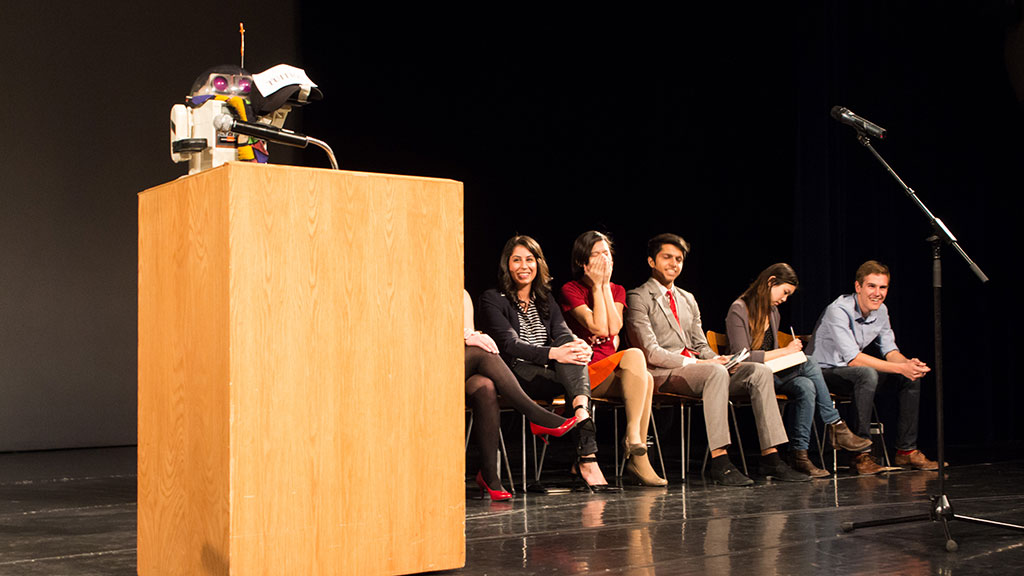 Christina Varvis
Christina VarvisA lot of things in life are confusing, but voting shouldn’t be one of them. With that being said, let’s clear the air on the voting system you’ll be subjected to during this week’s Students’ Union elections.
Unlike most of the other votes you’ve cast in your life, the Students’ Union employs a preferential ballot. This means that you can vote for more than one person, if you’d like — very exciting! Instead of voting one way or another, you rank the candidates for each position based on your preference — mark your first choice with a “1,” your second choice with a “2,” you get the idea.
There are several cool benefits to the preferential voting system, especially in the student governance setting. As opposed to the simple majority (or “first-past-the-post”) method used in the Canadian electoral system, preferential voting ensures that the “most preferred” candidate wins. That is, the first-past-the-post system may award a candidate leadership even if they won 30 per cent of the vote, for example, as long as they got the highest sum of votes in their favour. Given that SU executive races are contested, using preferential ballots prevents “vote-splitting” and the position going towards a person that the majority of the students didn’t vote for. Another benefit: in the event that you like a few candidates, you can still give all of them a vote (although one has to be ranked above the other, of course).
However, since preferential voting is unfamiliar to most Canadians, awkwardly coming across it for the first time at university is bound to create some problems. There tends to be a misconception among some students that you must rank every single candidate, regardless of whether you want them to win or not. Not only is this entirely untrue, but it may vote a person into a position that voters didn’t “mean” to bring into power — even ranking somebody in fourth place by mistake could contribute to their victory.
As an example of the weird and wonderful ways that preferential voting works, current VP (Academic) Kathryn Orydzuk actually received less first-round votes than Fahim Rahman one year ago. But, because she received more second through fifth-place votes, she ended up receiving the position. This is by no means a testament to whether Oryzduk “deserved” the position or not, but merely shows the stark difference between our familiar and university’s electoral systems.
So, to properly exercise the purpose of the preferential ballot, only rank the candidates that you think should have the position — which is hardly ever, to most voters, the entire race. If you hate one candidate’s platform, or if your favourite candidate has a known opposition that could harm their chances of winning, don’t rank them at all.
And remember, “None of the Above” or (NOTA) is a valid candidate for each election, and is probably the most under-loved and underused facets of the SU’s voting system. If you really want your candidate of choice to have a better chance at being elected, I’d suggest marking your candidate of choice with a “1,” then marking NOTA with a “2” — that’s one less vote your preferred candidates’ competitors will be able to gain in the second-placed slot. Or, if there’s a race where you think neither of the candidates are qualified for the position, I’d encourage you give your first-place vote to NOTA.
If any candidate receives less votes than NOTA, they won’t be eligible for the position they’re running for. Though it’s extremely rare, NOTA has won and can win races, and it’s not the end of the world if it does. The race will simply re-open at a later date, and hopefully people who are better qualified for the job will take a stab at running.
Some people argue that this electoral system is “too complicated” and that it creates more problems than it’s worth, often shifting the blame on the SU for not properly explaining preferential ballots to students. In reality, it really isn’t that complicated — the Australians use this system, after all, and they seem like a chill bunch of folks. As long as voters aren’t lazy and take, like, two minutes to educate themselves, the preferential voting system is actually pretty neat.
Whether you’re a preferential ballot fan or critic, there’s nothing we can do to change the SU’s electoral system — for this year, at least. But if you do vote this week (which you should, obviously), make sure you do it correctly.





Your paragraph about NOTA has a bit of a misconception about the voting system. When the votes are first counted, only the #1 ranked candidates are counted at all. If (and only if) your preferred candidate is eliminated, then your subsequent votes start mattering.
So voting for your favorite candidate as #1 and NOTA as #2 doesn’t help your preferred candidate whatsoever, because the only way your NOTA vote can be counted is if your favorite candidate is already eliminated. A vote with NOTA as second place after a favorite candidate isn’t a method to game the system into helping your candidate any extra amount – instead it means exactly what it suggests, that the voter would like their favorite to win, and in the event their favorite isn’t elected, would prefer a re-election over any other candidates.